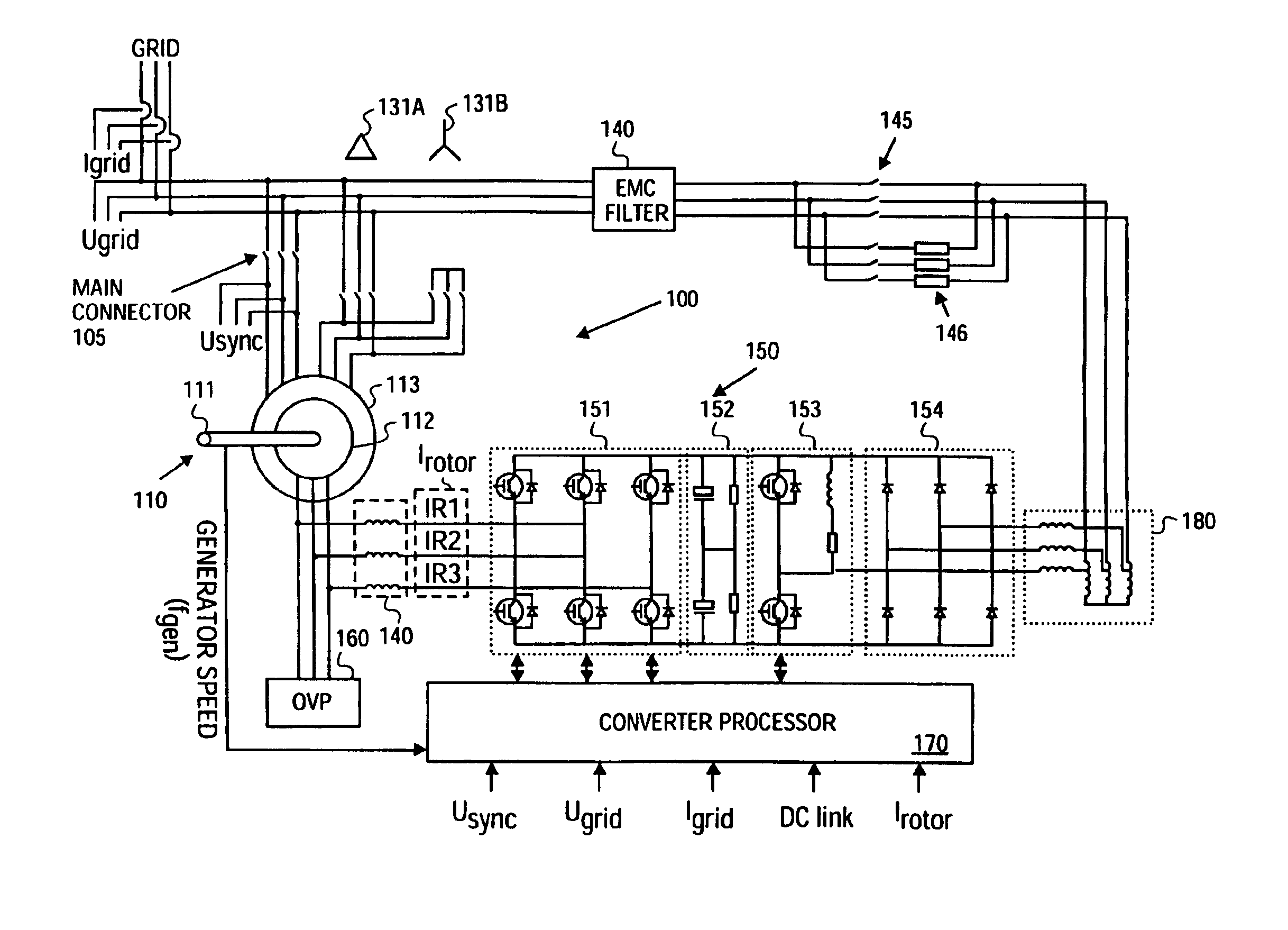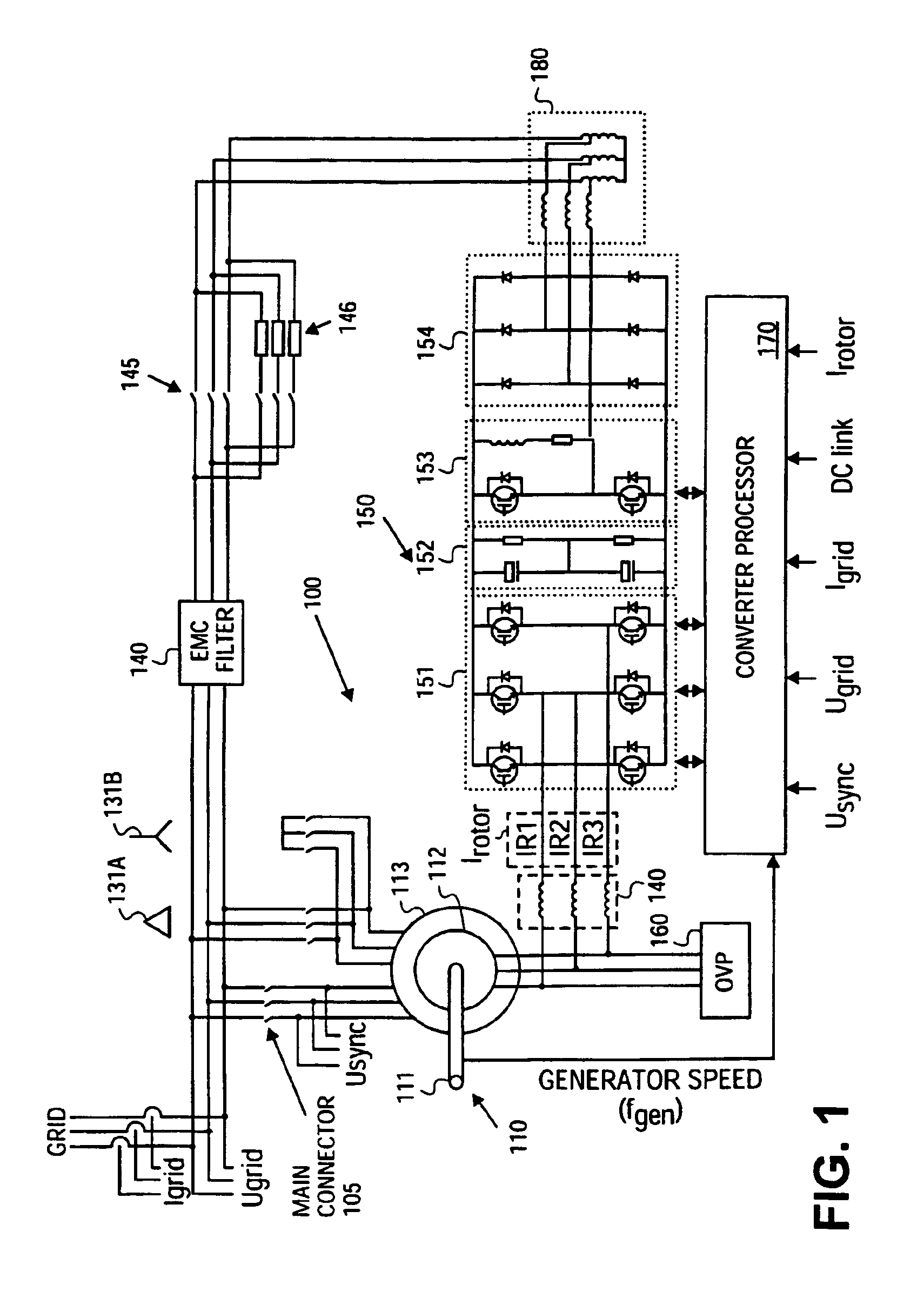Variable speed wind turbine having a passive grid side rectifier with scalar power control and dependent pitch control
a variable speed wind turbine and grid side technology, applied in the direction of variable speed operation control, proportional integration algorithms, electric generator control, etc., can solve the problems of limiting the energy conversion efficiency of the generator, not harnessing all of the wind power at high speeds, and requiring disabled, so as to improve the responsiveness of the wind turbine and achieve precise control of electrical quantities.
- Summary
- Abstract
- Description
- Claims
- Application Information
AI Technical Summary
Benefits of technology
Problems solved by technology
Method used
Image
Examples
Embodiment Construction
Reference will now be made in detail to implementations of the invention, examples of which are illustrated in the accompanying drawings. Wherever possible, the same reference numbers will be used throughout the drawings to refer to the same or like parts.
The variable speed wind turbine described herein provides a simplified power converter using a passive grid side rectifier, which avoids using active switches. For example, the passive rectifier could be comprised of diodes. As such, the passive grid side rectifier does not require processor control and provides for a more reliable power converter. In particular, passive components are more reliable than active components. Furthermore, because active switches can cause power loss during power conversion, the passive grid side rectifier can improve power conversion efficiency for the wind turbine. In addition, using a passive grid side rectifier does not produce high frequency harmonics and provides less expensive and complicated ci...
PUM
 Login to View More
Login to View More Abstract
Description
Claims
Application Information
 Login to View More
Login to View More - R&D
- Intellectual Property
- Life Sciences
- Materials
- Tech Scout
- Unparalleled Data Quality
- Higher Quality Content
- 60% Fewer Hallucinations
Browse by: Latest US Patents, China's latest patents, Technical Efficacy Thesaurus, Application Domain, Technology Topic, Popular Technical Reports.
© 2025 PatSnap. All rights reserved.Legal|Privacy policy|Modern Slavery Act Transparency Statement|Sitemap|About US| Contact US: help@patsnap.com



